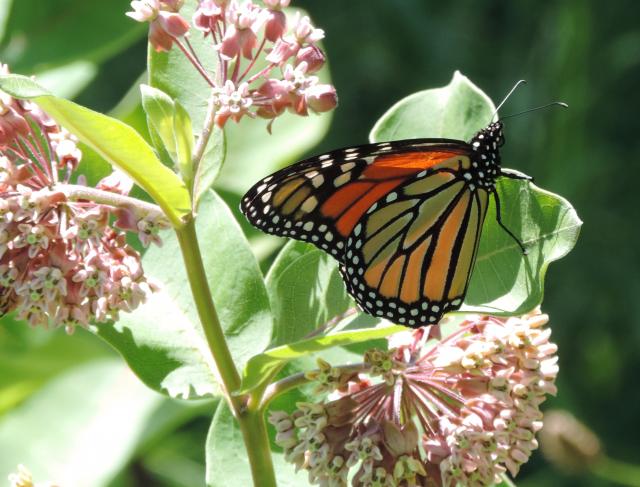Journey North News

December, 2014
The overwintering season in Mexico is now underway. Scientists will measure the population in late December and announce the results by March. Will the population have increased from last year's record low?
Image: Estela Romero

November 27
At last, a mass arrival of monarchs has occurred. "Here in Angangueo, I could see large numbers flying at the entrance of the town, indeed heading towards the sanctuaries," says Estela.
Image: Elizabeth Howard

November 16
More than two weeks after the first monarchs reached the overwintering region, people waited with concern. "Our impression is that they are arriving slowly and in small numbers," said Estela on November 16th.
Image: Estela Romero

November 11
We're still waiting for the masse arrival, reports Estela Romero. After last week's initial appearance there's been no sign of the millions of monarchs expected.
Image: Estela Romero

November 6
It's official! The first colony — containing several thousand monarchs — was discovered on November 2nd. "Faithful to their cultural and ancestral tradition, the monarchs have begun to arrive in their overwintering palace in Mexico by Dia de los Muertos."
Image: Felipe Martínez Meza

October 30
They're here! As of sunset this evening, the first three monarchs of the 2014-2015 overwintering season have reached their mountain home in México!
Image: Estela Romero

The first monarchs are expected to reach their winter home any day! Traditionally they arrival by November 1st, Mexico's Day of the Dead. "The arrival of the monarchs symbolizes our ancestors' souls returning to Earth for their annual visit," says Estela Romero. Image: Elizabeth Howard

After funneling across Texas for over two weeks, the monarchs are entering northern Mexico now and traveling the final 500 miles of their journey. Large concentrations are raising hopes for a population rebound. Image: Elaine Ward

October 9
North winds swept the migration into Texas this week, and marked the beginning of peak season in the state known for the most spectacular migration of all.

October 2
After nearly two weeks of south winds, the leading edge of the migration hasn't moved south of Kansas. To the delight of people watching, monarchs continue to come down from the north and are stacking up as they wait for a north wind.

The Atlantic Ocean is directing the migration now in the east. Monarchs hug the coast as they travel southward, trying to avoid the winds that can carry them out to sea. Image: Barbara Becker

Unseasonably cold temperatures this week shortened daily flights, but the monarchs pressed on. Image: Bruce A. Morrison

People counted monarchs roosting by the hundreds, feeding by the dozens, and flying overhead at rates up to 16 monarchs per minute. Comparative counts reveal migration pathways — and are pointing to a larger population this year. Image: Alinda Wiarda

September 4
Monarchs are on the move — flying, nectaring, and roosting. This year's larger numbers are a hopeful sign.
Image: Randy Klouk

August 28
The monarchs are on their way to Mexico! Observers along the migration trail are reporting clear signs of migration.
Image: Pat Swerkstrom

August 21
Welcome to Fall Migration 2014! Share your sightings and help tell the story of the monarch's journey south
Image: Amy Evoniuk

Get Ready!
Get ready to track the monarch's migration to Mexico. Beginning August 21st, weekly news updates will be posted on Thursdays.
Image: Bud Hensley

August
The magnificent migratory generation is developing. Watch for signs of southward movement in mid-August.
Image: Katie Hone

July
Breeding is in full force and the population is growing with each new generation.
Image: Darleen Horman

Explore previous migration seasons:
Image: Frank Matheson


